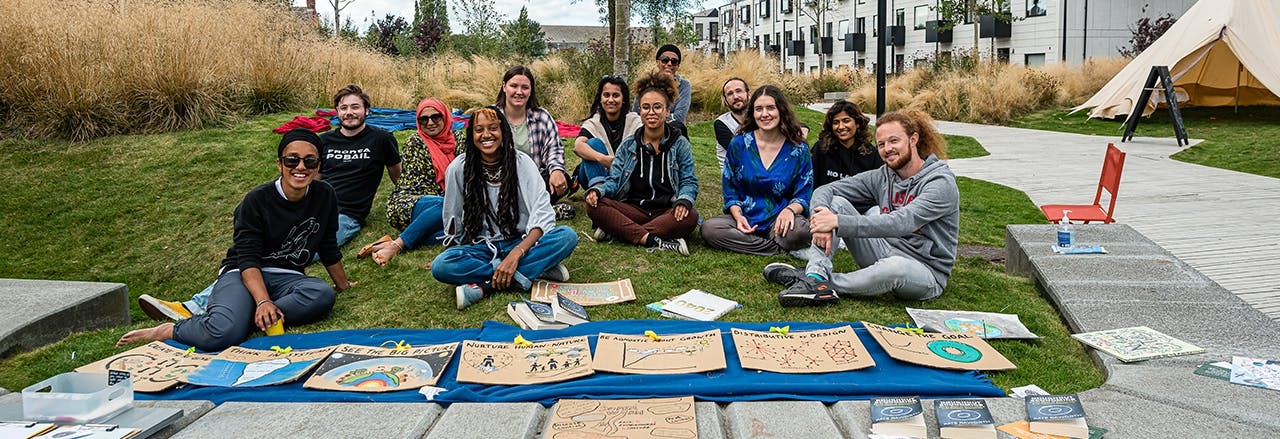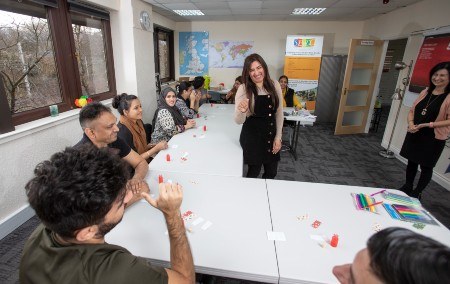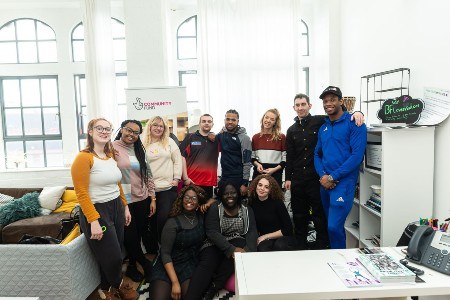
Board diversity
According to the Charity Commission, having a diverse board can “bolster a charity’s resilience and give it the best chance of fulfilling its purposes into the future”. Yet in 2017, two-thirds of charity trustees were male and 92% were white, older, and educated to an above-average level.
Here we look at why that matters for all of us, and share ways that charities can make their leadership more diverse and representative of the communities they serve.
Listen to this article
You can listen to this article as a sound recording, lasting 10 minutes and 6 seconds, by clicking the button below.
1. Why it matters
In addition to basic considerations of fairness and equality, board diversity is also linked to positive performance. A board that isn’t diverse risks missing out on a range of valuable experiences and skills and on diverse and perspectives. This may have an impact on your credibility, weaken relationships with potential beneficiaries and make it harder to reach some parts of the community. It may also make it harder to fully understand what your service users want and how you can support them most effectively.

In its response to the 2017 research, the Charity Commission noted that, without diversity, boards are at greater risk of unhelpful dynamics, such as “group-think, unwillingness to challenge colleagues, and complacency of vision”.
And it can affect opportunities for funding. 44% of charities told Getting on Board, a trustee recruitment and diversity charity, that funders are increasingly asking questions about the make-up of their boards. That doesn’t mean that grants are made on the basis of board diversity – but it can be a factor in assessing how well your group represents the community you aim to support.
2. Representative boards
A group working in working class communities might have a board with people of different ages, ethnicities and genders – but if they’re all university educated and from wealthier backgrounds, they may still need to do work to become more reflective of their community. Getting on Board found that almost 60% of charity boards are not representative of the communities they support.
Looking at your own internal culture, these questions could help identify possible gaps:
- Does your board represent the people you aim to support? Does it have an inclusive culture that will welcome and support diverse members?
- Are beneficiaries supported to become board members? Can you do more to enable and support this?
- How often does your organisation undertake training on diversity? As well as general awareness, you could seek training on specific areas, such as cultural competence, anti-racism, or neurodiversity awareness. Do you dedicate time to reflect on your progress and make tangible action plans?
- Does your board have an equality, diversity, and inclusion (EDI) policy?
- Who else can board members look to for guidance, support and challenge?
- Would hearing other perspectives help you to see and do things differently?
- Consider having a critical friend for frank, constructive input.
3. Making recruitment accessible and fair

Researching the period 2017–2020, Reach Volunteering found that a more open approach to recruitment had increased the diversity of board applicants – but improvement only went so far.
White applicants were still almost twice as likely to be appointed as Black or Asian applicants, and the people aged 55–64 were 80% more likely to be appointed to a trustee role than 18–34-year-olds.
Getting on Board found that, for 55% of charities, over half of trustees were personally connected to other board members before joining. As Reach put it, “the candidates are there, the problem is how charities recruit.”
Here are ways to address this:
- Focus on the skills needed for the role, not the type of person who would fit with other board members. New appointments should offer something different that moves the board and organisation forward – not more of the same. Instead of thinking, “how would this candidate fit with the existing board?” ask yourself, “what new perspectives can this candidate bring?”
- Advertise the position publicly and widely. Using job boards and online platforms gives you access to a wider and more diverse pool of applicants. Currently over 90% of charities recruit most of their trustees through word of mouth or existing networks. Only 10% of trustee vacancies are advertised.
- Write an appealing advert. This is your chance to inspire people, to make them want to join your board, rather than just listing governance activities, skills, and qualifications.
- If you work with a recruitment agency, be clear you want a fair, accessible recruitment process. Recruitment agencies such as the Black Leadership Group support organisations to diversify their recruitment.
- Remove all unnecessary barriers to application. Ask yourself if degree-level education is really a requirement. Make sure non-board experience is also valued: you can teach things like charity governance processes, but not personal experience. Consider whether current working patterns make it harder to take part: is in-person attendance essential? When, and how often, do trustees need to be available? Can you be more flexible?
- Can you do outreach for the position? For example, if you’re looking for young trustees, have you contacted local youth groups or colleges?
- Who will be on the recruiting panel? A diverse panel can make candidates feel more at ease, and bring different perspectives to assessment.
- Places where you can list charity board vacancies include:
4. Keep the bigger picture in mind
Diversity isn’t about meeting quotas, but about the real value that different backgrounds and experiences bring. Diversity targets can be a way to make sure there is a mix of people leading the organisation, but it’s essential to keep the bigger picture in mind, to appreciate the opportunities and perspectives that different people bring.
- Candidates don’t want to feel like tokenistic appointments. Recruit diversely because you genuinely value difference and the insights and experience this brings to your organisation.
- Keep supporting current board members too, all trustees benefit from support to continuously develop and improve.
- Plan a thorough induction process. Don’t make assumptions about what new board members will or won’t know. A comprehensive induction, including space to ask questions and learn on the job, helps to provide a level playing field for all new appointments.
- Don’t recruit for diversity alone. Look for diverse candidates who have the skills, knowledge, experience and networks to help your organisation thrive.
- Your area may have groups that specialise in providing training on the benefits and opportunities of diversity. Infrastructure bodies like Councils for Voluntary Services (CVSs), or consultants and trainers who specialise in diversity, can be a good place to start.
These groups may also help people to train for trustee roles, or to find opportunities locally. So they can offer the dual benefits of helping you understand the value a diverse board can bring, and access to knowledgeable and skilled candidates.
5. Resources
A range of organisations specialise in advice on leadership processes for voluntary and community sector groups. Here’s some of the guidance they offer:
Finding diverse candidates with a passion for the role
Looking for new trustees, Girls Friendly Society started with a skills audit. Once it had built a profile of who it wanted to attract, the charity advertised the vacancy widely. It encouraged service users to share the link to the advert, and held events for people to find out more.
Interviews were short, to avoid favouring those with longer professional experience. Flexible interview slots made it easier for people to attend around their working patterns or caring responsibilities.
As a result, more than 45 women applied, and Girls Friendly Society was able to appoint eight trustees (including three under the age of 30) and three committee chairs. Candidates were also much more diverse (in terms of ethnicity, sexual orientation, and disability) than in previous rounds of recruitment.
“If we’d recruited by a tap on the shoulder, we wouldn’t have had this kind of diversity, and we wouldn’t have had this kind of passion,” said the CEO. “The process itself attracted people who understood where we’re going, and who wanted to be a part of that.”
With thanks to Anj Handa and Penny Wilson of Getting on Board for sharing research findings and tips featured in this piece. If you have further ideas or practical examples on how to diversify charity boards, please do consider sharing them with us at knowledge@tnlcommunityfund.org.uk.